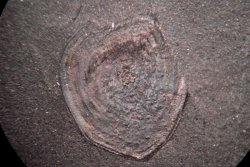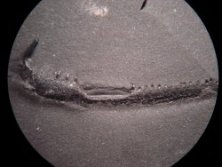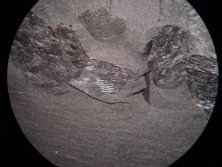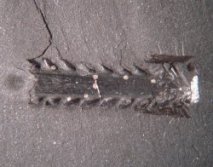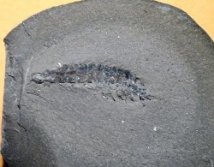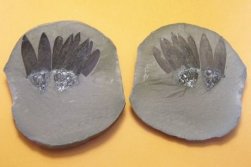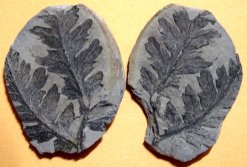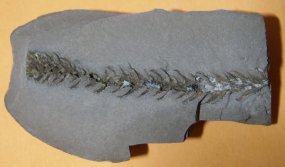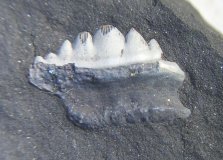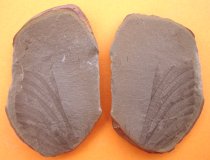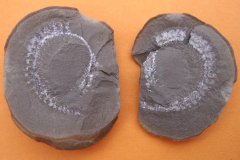SandyForth Opencast
Contribution by Steve Livesley
Click on the photos to enlarge
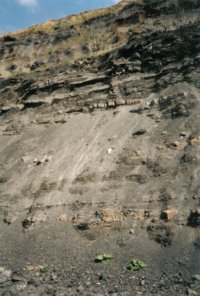 One exposure I have collected
after the shutdown of Crockhey is called Sandyforth Opencast near to Winstanley
in the Wigan area, located approximately 1 mile north of the
One exposure I have collected
after the shutdown of Crockhey is called Sandyforth Opencast near to Winstanley
in the Wigan area, located approximately 1 mile north of the
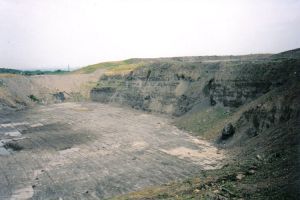 Crockhey
exposure. The last mining operator went bankrupt, leaving the site open for
a good number of years, which allowed a longer than usual period of time
to collect fossil material from there.
Crockhey
exposure. The last mining operator went bankrupt, leaving the site open for
a good number of years, which allowed a longer than usual period of time
to collect fossil material from there.
Recent research suggests the area encompassed by the exposure has been opencast
mined on four occasions previously starting in 1948 accessing the close to
the surface seams. The area is also crossed by a number of geological faults,
one being named the Crows nest Fault, which throws the seams out of alignment
approximately 40 m and bringing differing coal seams closer to the surface
within the boundaries of the opencast. (See strata
diagram)
My recent experiences at Crockhey Opencast made me initially looking
for siderite nodules, but for some reason at Sandyforth, although not completely
devoid, these seemed to be very few and what was evident seemed not completely
formed.
At Crockhey, most of the fossil bearing nodules
came from above the Wigan 2 foot seam. Although here, that seam had been
extensively worked previously, the sparse nodules that were actually present,
seemed to be relatively fresh from the most recent excavations. Some nodules
could be present in the form of previous opencast backfill. Due to the lack
of nodules I started to determine other possible sources for fossil material
from the site, and focused on a very dark siltstone
band that would possibly contain fish remains if laid down as a silt
sediment during periods when the area was under water.
The alternative, to concentrate on a dark silt layer, started to prove
successful. Sections of this I found up to 300 millimetres thick, where at
Crockhey I had only observed a similar material up to 50 mm thick. The silt
was very fine as well, so I presumed the area must have been a very slow
moving water way if not a lagoon. It became quite frequent in this layer
to discover individual fish scales and teeth,
nice finds.
But then I found a lower jaw bone, which had the teeth still embedded within
it. This is attributed to a juvenile rhizodont, a species of fish from an
extinct group of predatory lobe-finned fishes. These fossils are found in
many areas of the world with the earliest known being about 377 Ma, the latest
around 310 Ma.
In addition to the normal type of scale, I came across a grouping of scale
type attributed to Strepsodus anculonamensis. A further discovery
from within the same silty sediment proved to be the spine of a xenacanthida,
which is a freshwater shark that appeared during the Lower Carboniferous.
At two exposures previously, I have found fossil shark eggcases, and it's
nice to finally find part of the shark that (possibly) produced them. The
spine I found was from a species possibly Anodontacanthus
triangularis. Click on the photos.
All these fossil specimens appear to come from juveniles of the species, which for carboniferous fish is very rare indeed. So I think it can be determined that this area during the upper carboniferous period was possibly not a section through a constant river channel, but more likely a marginal section of a levee. Marginal shallow areas are often used as sanctuary by smaller fish to prevent predation from their larger relatives. Another clue to this was the discovery of some ripple marks contained within a mudstone, suggesting the area’s could have had shallow marginal edges, where water rises and falls slowly creating the ripples.
From the same area two quite poorly preserved Bellinurus trilobitoides horse shoe crabs were also discovered.These were the only ones we found, which was confusing, as I would have expected this environment to be an ideal home for these creatures to flourish.
Insects are present usually with an abundance
of well preserved fossil plant material, which wasn’t the case at
Sandyforth. There was very little sign of anything of this nature until I
discovered a small area that contained some promising nodules within the
characteristic light blue mudstone. It was only after it has rained that
this material stood out from the rest and appeared to be worth further
investigation. It produced five examples of a syncarid crustacean (a small
shrimp) called Palaeocaris.
A section of an insect wing was found fossilised as well, with the condition
of the nodule suggesting it to be from a previous exposure at the site. Some
larger individual fish scales up to 25 mm in size were also collected in
siderite nodules as well from this material.
Furthermore there were a few plant fossils in the nodules. Click on the photos
below to see some of them.
All in all a very pale environment, different from Crockhey, and very hard
to actually find quality fossils, but certainly worth recording for future
study…..
Finally some very fine fossils from the collection of Sean Sale: a tooth of a shark, an unidentified wing and an unidentified milliped.
